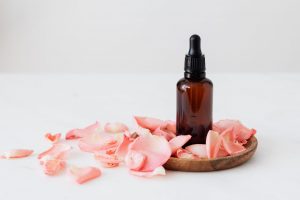Toxic Smoke in the West Coast – 5 Tips to Improve Your Breathing
It has been a WEEK ever since toxic smoke has taken over the West Coast. With devastating fires all over the beautiful West, nearby cities are smothered in smoke and while it is starting to lighten up, the effects will likely last into the coming Fall. While the best way to stay safe (and avoid respiratory damage) is to simply stay indoors, we want to do better than that. Here are our 5 tips to clarifying the air in your immediate environment to optimize your breathing quality – with or without smoke outside your door.
1. Stay indoors (when there’s smoke outside)
This one is obvious, but we want to include it anyway as we’ve seen some people dining outdoors (without masks, during the height of the smoke too) and you know, “better safe than sorry!”
Smoke of any kind is harmful to the respiratory system and according to the EPA, “The biggest health threat from smoke is from fine particles. These microscopic particles can penetrate deep into your lungs. They can cause a range of health problems, from burning eyes and a runny nose to aggravated chronic heart and lung diseases. Exposure to particle pollution is even linked to premature death.” (EPA)
Breathing in smoke, especially without any form of mask or face covering, will allow these tiny particles to enter the bloodstream, affecting many areas of the body. Symptoms are often immediately noticeable. Even masks and face coverings cannot fully eliminate exposure so the best way is to stay indoors until the air outside is safe to breathe.
2. Turn on an air filter
That’s right! It’s time to invest in the air you breathe (or rather, your lungs)! You’d be surprised the amount of dust, allergens, and other particles that an air filter can catch. Especially now that we are working and schooling from home and generally spending most of our time indoors, it can pay to have a quality air filter to elevate your quality of living.
Air quality is something we often take for granted until we suffer from spring allergies or there is severe air pollution. There are also a plethora of allergens and potential toxins in the average home that may aggravate the respiratory system and cause discomfort or even pain (ie. headaches, sinus issues, etc.). Having an air filter available will help eliminate many of these irritants.
3. Keep air purifying plants
We all know that trees purify the air, but did you know there are also indoor plants that purify the air as well? Many of the popular indoor plants also have this added bonus, bringing beauty and function to any space. Here are a few of these amazing plants (that are also low-maintenance)!
–Chinese Evergreen: We have two of these beauties in the Alight office! They are incredibly easy to take care of – water whenever the soil is dry, keep in indirect sunlight, and pick off any yellow leaves from the stem. It is thriving, growing baby leaves each week!
–Varigated Snake Plant: This one is a popular choice for many offices because of its interesting shape and variegated design! It also happens to be on many low-maintenance plant lists as well.
–Peace Lily: Another popular plant that is often given or received as a lovely gift, and with good reason- they aren’t likely to become a burden to take care of. They filter out many toxins from the air around the home or office and only need to be watered generously about once a week.
**Note: Some of these plants may be toxic for pets so please be sure to check their toxicity to any animal friends before bringing them home!
4. Try breathing exercises
Another wonderful way to optimize your breathing quality is to work on breathing exercises. These not only help strengthen the lungs, but also bring some peace and calm into your daily routine! Here is what I do:
The 7-7-7: Breathe in through your nose slowly for 7 seconds, then hold your breath for 7 seconds and let out slowly through the mouth for 7 seconds. This is a great exercise to do, especially before you sleep as it has a calming effect on the mind.
Focus on your breathing when exercising as well. Breathing properly during exercise is actually essential and can also help you go for longer! My go-to breath pattern when jogging or doing pilates is the 2-2 pattern: 2 quick breaths in through the nose, 2 quick breaths out through the mouth.
5. Diffuse essential oils
If you’ve read our post on Peppermint essential oil and its uses, you’ll know that we are benefactors of essential oils. While they may be limited in terms of purifying the air itself, essential oils have health benefits that can be reaped through the respiratory system!
An essential oil diffuser is a must in my household as it helps spread the effects of the oils around my surroundings, serving as a humidifier as well as a natural air freshener!
With that said, I’ve been gravitating toward a certain essential oil during the past week and that is Eucalyptus essential oil. If you haven’t used this before, it has a very minty scent and can be helpful during the cold and flu season as it contains eucalyptol or cineole. Diffuse this powerful oil (try it with lemon) and enjoy its antimicrobial and soothing effects! (source)
There you have it – our 5 tips for improving your air quality and breathing! This is imperative for your quality of life, especially when you spend most of the time at home or indoors. If you are interested to learn more tips for your home office or home school set-up, check out our blog post here, or contact us at Alight Chiropractic to learn more about posture and wellness!





